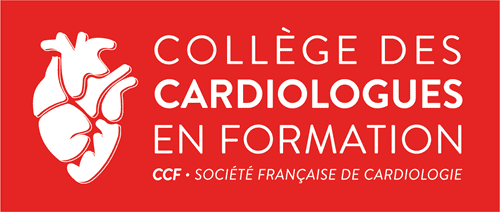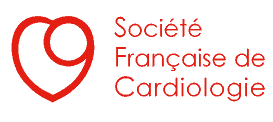Suivez nous sur les réseaux sociaux
Cet outil a vocation à informer, diffuser l’information auprès des jeunes cardiologues (internes, assistants, chefs de cliniques, jeunes praticiens, etc.), et faciliter les échanges.
Voici un aperçu rapide des sujets abordés dans cette publication :
Toutes nos publications
Une question ?
Publications
In-hospital Prognostic Value of TAPSE/sPAP in Patients Hospitalized for Acute Heart Failure
Voici un aperçu rapide des sujets abordés dans cette publication :
In-hospital Prognostic Value of TAPSE/sPAP in Patients Hospitalized for Acute Heart Failure
Charles Fauvel, Jean-Guillaume Dillinger, Reza Rossanaly Vasram, Claire Bouleti, Damien Logeart, François Roubille, Christophe Meune, Patrick Ohlmann, Eric Bonnefoy-Coudraz, Franck Albert, Sabir Attou, Marouane Boukhris, Thibaut Pommier, Benoit Merat, Nathalie Noirclerc, Nabil Bouali, Samy Aghezzaf, Guillaume Schurtz, Nicolas Mansencal, Stéphane Andrieu, Patrick Henry, Théo Pezel, for the ADDICT-ICCU Investigators
European Heart Journal – Cardiovascular Imaging, Volume 25, Issue 8, August 2024, Pages 1099-1108
PMID: 38428980
DOI: 10.1093/ehjci/jeae059
Abstract
Aims
Tricuspid annular plane systolic excursion over systolic pulmonary artery pressure (TAPSE/sPAP) assessed by echocardiography appears to be a good non-invasive approach for right ventricular to pulmonary artery coupling assessment. We aimed to assess the in-hospital prognostic value of TAPSE/sPAP among patients hospitalized for acute heart failure (AHF).
Methods and Results
In total, 333 consecutive patients (mean age 68 ± 14 years, 70% of male, mean left ventricular ejection fraction 44 ± 16%) were hospitalized for AHF across 39 French cardiology departments, with TAPSE/sPAP measured by echocardiography within the first 24 h of hospitalization were included in this prospective study. The primary outcome was in-hospital major adverse cardiovascular events (MACEs) defined as all-cause death, resuscitated cardiac arrest or cardiogenic shock and occurred in 50 (15%) patients. Using receiver operating characteristic curve analysis, the best TAPSE/sPAP threshold for in-hospital MACEs was 0.40 mm/mmHg. TAPSE/sPAP < 0.40 mm/mmHg was independently associated with in-hospital MACEs, even after adjustment with comorbidities [odds ratio (OR): 3.75, 95% CI (1.87-7.93), P < 0.001], clinical severity [OR: 2.80, 95% CI (1.36-5.95), P = 0.006]. Using a 1:1 propensity-matched population, TAPSE/sPAP ratio < 0.40 was associated with a higher rate of in-hospital MACEs [OR: 2.98, 95% CI (1.53-6.12), P = 0.002]. After adjustment, TAPSE/sPAP < 0.40 showed the best improvement in model discrimination and reclassification above traditional prognostic factors (C-statistic improvement: 0.05; χ2 improvement: 14.4; likelihood-ratio test P < 0.001). These results were consistent in an external validation cohort of 133 patients.
Conclusions
TAPSE/sPAP < 0.40 mm/mmHg assessed by an early echocardiography during an AHF episode is independently associated with in-hospital MACEs suggesting enhanced close monitoring and strengthened heart failure-specific care in these patients.


